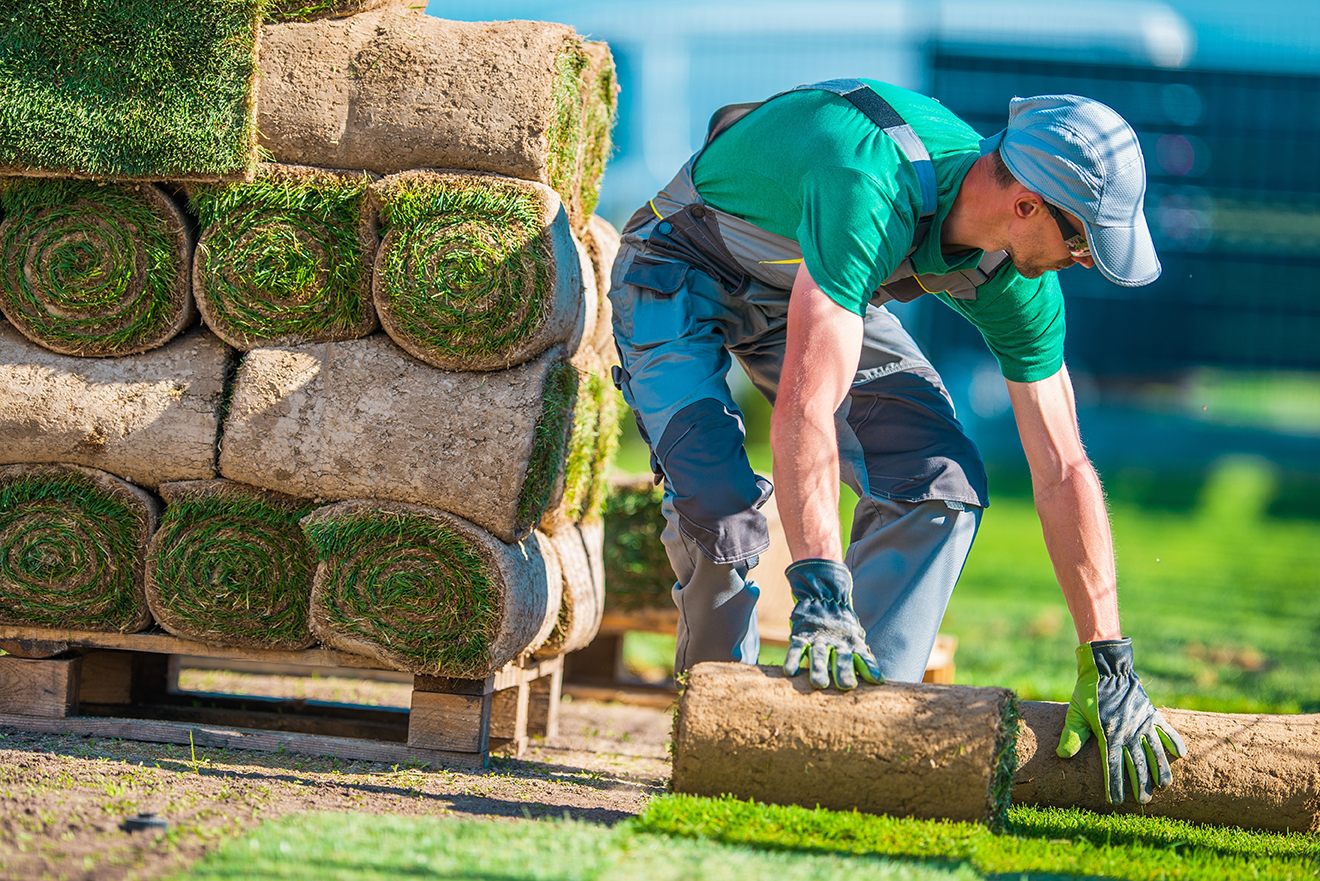Boost Your Property's Value with Landscaping San Marcos
Boost Your Property's Value with Landscaping San Marcos
Blog Article
Expert Landscape Design Solutions for Lasting Exterior Transformation
Enhancing exterior areas via specialist landscape design solutions can supply more than just visual allure; it can grow a sustainable setting that profits both homeowner and the world. From selecting native plants to executing water preservation methods and using environment-friendly hardscape remedies, the possibilities for lasting outdoor improvement are large. By recognizing the importance of maintenance methods that support sustainability, specialist landscapers can genuinely make an enduring impact on the exterior areas they deal with.
Advantages of Lasting Landscaping
Sustainable landscape design supplies numerous environmental and financial benefits for both property owners and the neighborhood. By implementing sustainable methods such as xeriscaping, utilizing native plants, and minimizing water use, homeowner can dramatically minimize their environmental influence. These techniques not only conserve water however additionally advertise biodiversity and minimize the need for harmful chemicals and fertilizers.

From a community viewpoint, sustainable landscape design plays a critical function in improving air and water quality, lowering metropolitan warm island impacts, and providing habitats for local wild animals. These benefits contribute to producing healthier and extra lasting environments for everyone to appreciate.
Native Plants Selection and Style
When planning a landscape layout, selecting indigenous plants is essential for maximizing sustainability and ecological community health. Native plants are adjusted to the local environment, soil conditions, and bugs, making them low-maintenance and more resistant to thrive in their natural surroundings. Incorporating native plants into landscaping develops not just enhances biodiversity yet also sustains pollinators, advantageous pests, and neighborhood wildlife.
Designing with native plants entails mindful factor to consider of aspects such as plant size, development behavior, flower time, and water needs to develop a sustainable and aesthetically enticing landscape. By selecting a diverse option of native plants, landscape developers can develop balanced ecosystems that bring in a variety of varieties and add to the general health and wellness of the environment.
Moreover, indigenous plants can help in reducing water usage, decrease the demand for chemical pesticides and fertilizers, and boost dirt top quality through their natural procedures. With proper selection and style, native plants can change exterior spaces right into growing, sustainable landscapes that benefit both the area and the environment.
Water Preservation Strategies
Including native plants into landscape design develops not just improves biodiversity yet likewise supports pollinators, beneficial pests, and local wildlife, which highlights the relevance of applying water conservation strategies in landscaping techniques. Water conservation is essential for sustainable outside spaces, specifically in regions susceptible to drought or water scarcity.

Eco-Friendly Hardscape Solutions
The usage of environmentally mindful products in hardscape style is a crucial aspect of creating lasting outdoor rooms. Environment-friendly hardscape options include a series of techniques focused on reducing environmental impact while boosting the looks and performance of outdoor areas. Including products such as permeable pavers, redeemed wood, recycled plastics, and natural stone can dramatically reduce the eco-friendly footprint of hardscape setups.
Permeable pavers, as an example, enable rainwater to permeate into the ground, reducing overflow and preventing water air pollution. Redeemed timber adds a rustic charm to outside home while advertising the reuse of existing sources. Recycled plastics can be changed right into long lasting and low-maintenance hardscape elements, using a sustainable alternative to traditional products. All-natural stone sourced from local quarries reduces transport discharges and blends harmoniously with the surrounding environment.
Maintenance Practices for Sustainability
To support the ecological integrity of environment-friendly hardscape solutions, carrying out critical maintenance techniques is crucial for ensuring long-term sustainability in exterior landscape design jobs. Regular maintenance not only a fantastic read preserves the visual appeal of the landscape yet additionally adds to its total sustainability by decreasing ecological influence.
One secret maintenance practice for sustainability is appropriate irrigation administration. Efficient sprinkling methods, such as drip irrigation systems or rainwater harvesting, help conserve water find this and promote plant wellness. In addition, regular evaluation and change of watering systems can protect against water waste and make certain optimum hydration for plants.
One more critical facet of lasting upkeep is the responsible use pesticides and plant foods. Choosing natural plant foods and employing incorporated bug monitoring strategies lessens dangerous chemical runoff into the setting, guarding both plant and ecosystem balance.
Additionally, normal cleaning and upkeep of hardscape functions like absorptive pavers or rock pathways protect against debris buildup and keep functionality while sustaining water seepage and drain, thus lowering the danger of erosion and flooding. Landscaping San Marcos. By sticking to these sustainable maintenance methods, outdoor landscapes can thrive harmoniously while lessening their ecological impact
Conclusion
In verdict, lasting landscaping supplies many benefits with making use of indigenous plants, water conservation techniques, eco-friendly hardscape options, and sustainable upkeep methods. By implementing these strategies, outdoor rooms can be transformed right into environmentally-friendly and visually pleasing locations that support biodiversity and lower environmental influence. Purchasing specialist landscaping solutions that focus on sustainability can result in lasting benefits for both the setting and property owners.
From choosing indigenous plants to implementing water conservation methods and utilizing environmentally friendly hardscape options, the opportunities for sustainable outside improvement are vast. By executing sustainable techniques such as xeriscaping, using native plants, and lessening water use, property owners can dramatically reduce their environmental effect. Water conservation is vital for official source lasting outdoor spaces, particularly in regions vulnerable to dry spell or water scarcity. By carrying out these water preservation strategies, landscape design specialists can create stunning, lasting exterior rooms that benefit both the area and the setting.
In verdict, lasting landscaping provides many advantages via the usage of native plants, water conservation techniques, environment-friendly hardscape services, and lasting upkeep practices.
Report this page